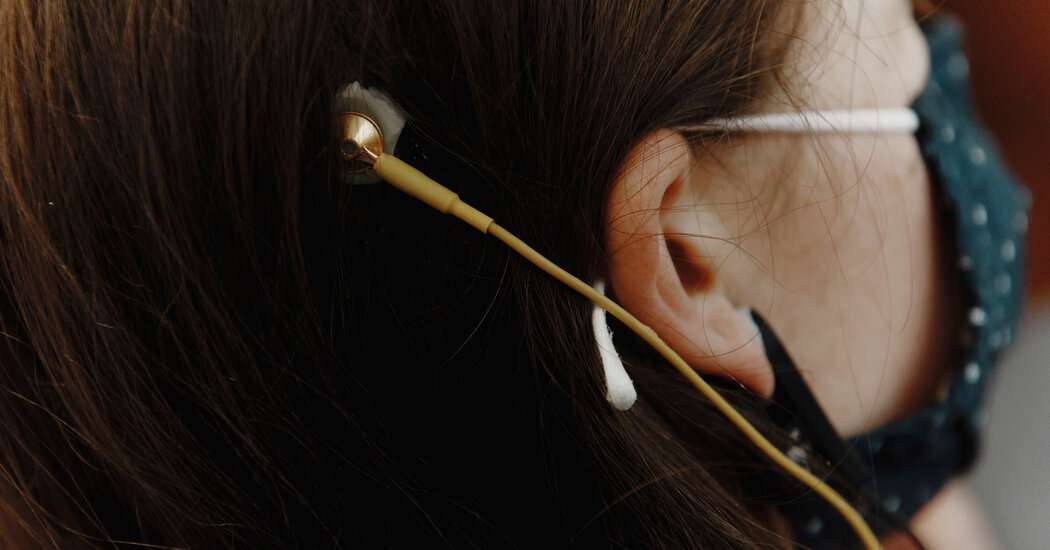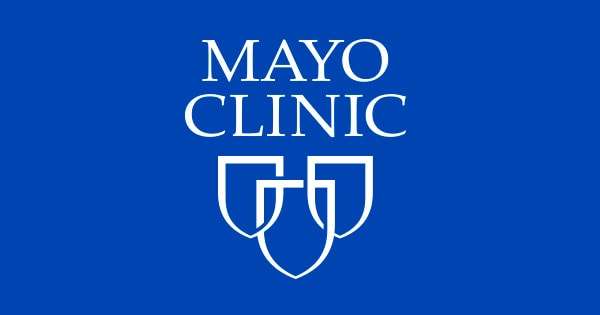Last month, the Sunday Times published a sensationalist article about a London clinic called Brainworks that offers therapy based on EEG feedback – “£1,320 for the standard 12 sessions.” Similar clinics can be found around the world. “Those who have tried it swear it offers inner transformation,” wrote journalist Jini Reddy, “a profound lessening of anxieties, awakened states, feelings of elation and the focused, clear, calm mind more readily accessed through years of effortful practices.”
EEG (electroencephalography) records the waves of electrical activity emitted by your brain. The basic idea of neurofeedback therapy is that you have the frequency of these waves shown to you, via sounds or images, so that you can learn to exert some control over them.
Anyone reading the Sunday Times article could be forgiven for thinking they’d been transported to the ’60s and ’70s. Back then, companies with futuristic names like Zygon Corporation cashed in on the discovery that experienced meditators show high levels of alpha brainwaves (8 to 12 Hz) when they are in a meditative trance. You could buy a home EEG kit from one of these outfits and teach your brain to achieve this state of “alpha consciousness.”
Unfortunately, the logic is flawed, as the late psychologist and skeptic Barry Beyerstein explained in a series of essays and book chapters published in the ’80s and ’90s. Just because a meditator in a state of bliss exhibits high levels of alpha waves doesn’t mean those alpha waves are playing a causal role in her state of bliss. As Beyerstein wrote, the correlation no more implies “that alpha wave production can produce a meditative state than opening one’s umbrella can make it rain.”
There are other issues too – Beyerstein’s research showed that the beneficial effects of EEG feedback were related to a person’s belief in the technology, not to any alterations in their brainwaves. Another study showed that people were able to produce high levels of alpha waves even when under threat of mild electric shock from the researchers – hardly a state of Zen-like bliss.
Although the Sunday Times acknowledges the flower-power days of EEG feedback, the message is that the technology has moved on. Christina Lavelle, a partner at Brainworks, is quoted explaining: “The 1990s technology caught up with the concept and there was scientific evidence that it works.” Lavelle adds that neurotherapy allows you to reach “states of mind you can’t normally reach” and that “its effects are permanent.”
These kinds of far-fetched claims set my alarm bells ringing. Have things really moved on that much since Beyerstein debunked the industry? I found a useful review from 2009 by David Vernon at Canterbury Christ Church University in England and his colleagues. It’s clear that these researchers are advocates for EEG feedback. Nonetheless, after surveying all the relevant evidence, they concluded: “The notion that alpha neurofeedback can enhance the mood of healthy individuals has yet to be firmly established.” Studies in this area also tend to be poor quality, lacking control groups and proper blinding. This means clients and their trainers usually know who’s receiving the EEG feedback, which brings in placebo-like factors of expectation and motivation. If there’s been a run of good quality new studies over the last couple of years to change this verdict, I couldn’t find them.
If you visit the Brainworks clinic website, you’ll see their therapists are “certified Neurofeedback Specialists … backed by seven years of intensive study in traditional mind technologies.” It certainly sounds like they know what they’re doing. But in that 2009 review by Vernon and his colleagues, they discuss how there is, as yet, no consensus on the length of time, or intensity, for which brainwave feedback needs to be conducted, in order to produce observable benefits. It’s the same regarding how brainwaves should be fed-back (via visual or auditory means); whether it is beneficial to train to decrease as well as increase alpha waves; or what the desired target frequencies should be. There isn’t even agreement about whether clients should have their eyes open or closed! “Unfortunately,” Vernon and his colleagues confess, “it is not clear at present what the most effective method to achieve [beneficial] changes would be.”
EEG feedback is also used increasingly to treat psychiatric and developmental conditions. The evidence-base is growing but remains inconsistent and there are the usual concerns about study quality. Probably the most studied and empirically supported condition for using neurofeedback is ADHD. A review published last year concluded that the evidence is promising but not conclusive (Update: I have posted links to the latest research trials at the bottom of this post). Neurofeedback is also touted as a way to achieve cognitive enhancement, for example in sport. I couldn’t find a contemporary meta-analysis, but again the evidence appears mixed. Another review (pdf) published by David Vernon in 2005 concluded “the plethora of claims regarding the use of neurofeedback training to enhance performance is matched only by the paucity of research showing a clear effect.”
I don’t doubt that most neurofeedback therapy clinicians are well-meaning and well-trained. But looking at the literature, it seems there’s good reason to be skeptical about using their techniques, especially as a shortcut to elation and enlightenment.
Most of all, I find it worrying how they present their services to the public. They make grandiose claims, like brain changes being permanent. They emphasize their technical wizardry (“Our chairs are based on NASA designs” boasts the Brainworks website). And what’s more, they continue to dally with New Age mysticism (Brainworks offers spiritual retreats and says their approach brings “spiritual neuroscience firmly into the 21st Century”). Just as in the flower-power days of neurofeedback, they still can’t make up their minds whether to clothe themselves in the white coats of science or to dress up in the loose robes of woo.
—
Update Nov 2017: A new paper in American Psychologist, by Robert Thibault and Amir Raz at McGill University, states that “placebo factors permeate EEG-nf [EEG-based neurofeedback] and likely account for the majority of relevant experimental findings and clinical outcomes.” In other words, most of the benefits seem to be a placebo effect based around the experience of attending a clinic and receiving attention from a caring practitioner, rather than having anything to do with learning to control your own brain waves. “EEG-nf entails a degree of deception,” the authors conclude, “the putative mechanisms differ from the actual underlying mechanisms. Moreover, cheaper and less time-intensive options may be available.” Thibault and Raz urge the research community to spend more time researching the nature of the placebo effects involved in neurofeedback therapy to better understand how it works and how its benefits might be exploited more cheaply and easily to the advantage of patients. They also draw attention to the massive conflict of interest in the research field: in a literature review, they found that “the first author on 37 of the 39 publications included (i.e., 95%) either runs a private EEG-nf practice or sells neurofeedback equipment.”
Update August 2017: In Lancet Psychiatry, a new triple-blind, randomised controlled trial of neurofeedback therapy for adult ADHD compared with sham neurofeedback (client thinks they’re getting neurofeedback but they’re not) or CBT-style therapy. All three groups showed improvements in symptoms. The neurofeedback group showed no greater improvements than the other groups. The authors, led by Dr. Michael Schönenberg, provide a useful summary of the implications of all the available evidence concerning neurofeedback therapy for ADHD to date: “This study adds to first evidence from other studies that investigated the effects of neurofeedback in children with ADHD or other clinical disorders and observed no advantage for neurofeedback when compared with sham treatments. Our results suggest that although neurofeedback training is effective in reducing ADHD symptoms it neither outperforms sham neurofeedback nor group psychotherapy. As such, neurofeedback cannot be recommended as an efficient approach in the treatment of adults with ADHD.”
Update August 2016: New meta-analysis of 13 previous randomised controlled trials of neurofeedback therapy for ADHD in children has concluded: “Evidence from well-controlled trials with probably blinded outcomes currently fails to support neurofeedback as an effective treatment for ADHD.” Coverage of the study at the trusted Mental Elf website concludes: “Findings from this meta-analysis suggest that neurofeedback cannot currently be recommended as a treatment for children with ADHD.”
Update November 2013: A new study has demonstrated the viability of using “sham” random neurofeedback, to allow for fully blinded trials looking at the use of neurofeedback therapy for children with ADHD. Participants could not tell if they were receiving genuine neurofeedback or sham neurofeedback. In this study, both conditions led to equal improvements in the participants.
A new authoritative meta-analysis and systematic review of non-pharmacological treatments for ADHD concluded that “Better evidence for efficacy from blinded assessments is required” before neurofeedback (and other interventions including cognitive training) can be recommended as a treatment for core ADHD symptoms.
Update September 2013: A new randomised, double-blind placebo-controlled trial has just reported that neurofeedback therapy for children with ADHD was no more effective than placebo.
To find a therapist, please visit the Psychology Today Therapy Directory.



